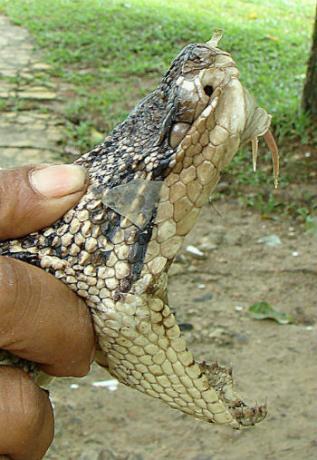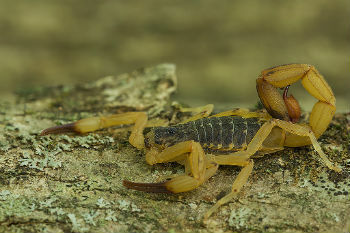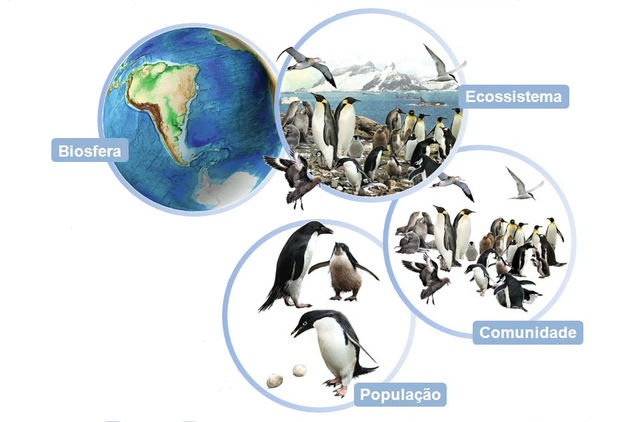Venomous animals are those that produce toxic substances that can be injected directly into other organisms, thanks to the presence of an inoculating device.
Differences between Poisonous and Poisonous Animals
Poisonous and venomous animals have in common the fact that they produce poison. What sets them apart is the presence of a structure to inoculate (inject, transmit) this substance.
Venomous animals have a device to inoculate the venom. The venom or venom glands of these animals connect with hollow teeth, stingers, or goads.
Examples of venomous animals are snakes, spiders, scorpions, wasps, bees, wasps and ants.
Among the venomous snakes found in Brazil are: the rattlesnake, the jararacas, the surucucu and the true coral. In snakes, the venom glands attach to the hollow teeth (tusks) used to inoculate the venom.

The snake's fangs are used to inoculate the venom.
You poisonous animals produce poison. However, they do not have structures for inoculation.
An example of a poisonous animal is the
frog. Some species are poisonous, but the venom is only released when the gland that produces it is pressed.Accidents with Venomous Animals
In Brazil, the main venomous animals that cause accidents are snakes, scorpions and spiders.
Snake accidents, especially with jararacas, happen more in the Midwest and North regions of Brazil.
Among the species of scorpion, the yellow scorpion is the one that causes the most accidents. Among the spiders, the Brown spider and weapon spider.
 yellow scorpion
yellow scorpion
Accidents occur more frequently in rural areas and in places with poor housing or hygiene conditions. The flood season is also prone to accidents, as many animals leave their shelters.
Some measures can be taken to avoid accidents with venomous animals. The main ones are:
- Avoid the accumulation of debris inside houses or backyards;
- Avoid entering wooded areas. When necessary, use closed pants and shoes;
- Use repellents;
- Do not reach into holes in the ground or into tree trunks.
In the event of an accident, the person must be immediately referred to a health clinic. If possible, the animal should be collected for identification. This will help in choosing the best treatment and serum to use.
You First aid consist of:
- Keep the injured person calm and preferably lying down;
- Keep the chopped limb higher than the body;
- Wash the bite site with soap and water or saline.
It is also important to highlight the following information related to first aid:
- Do not suck the poison;
- Do not tourniquet;
- Do not cut or burn the area affected by the poison;
- Do not squeeze the bite site;
- Do not put leaves, coffee grounds or earth on the wound.
Many of these actions can compromise blood circulation and cause necrosis or infections, further aggravating the victim's health.


